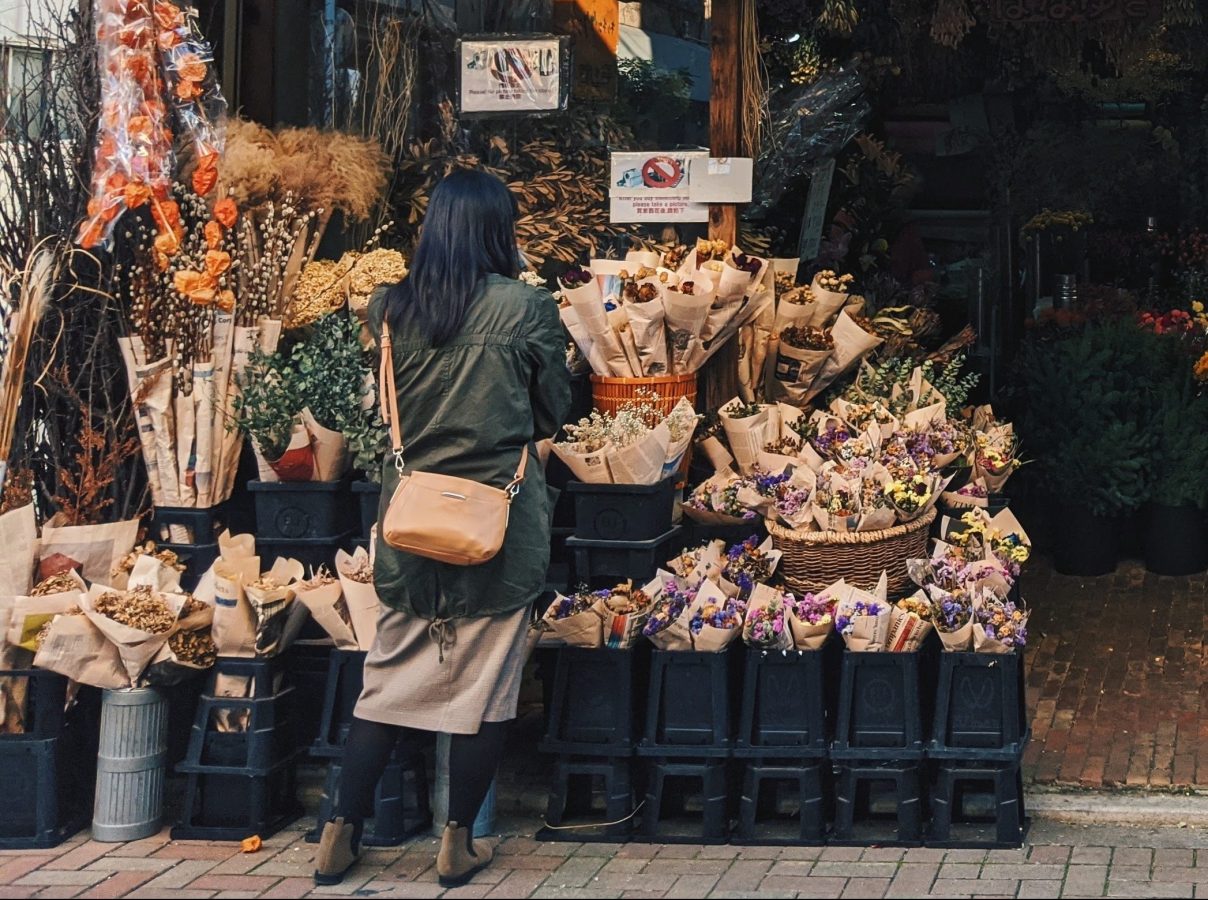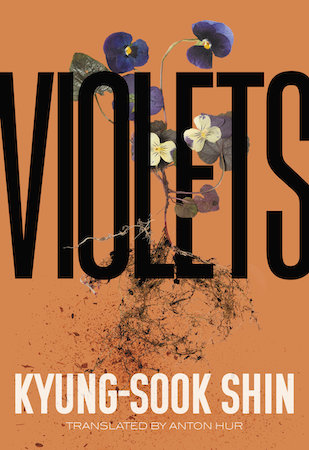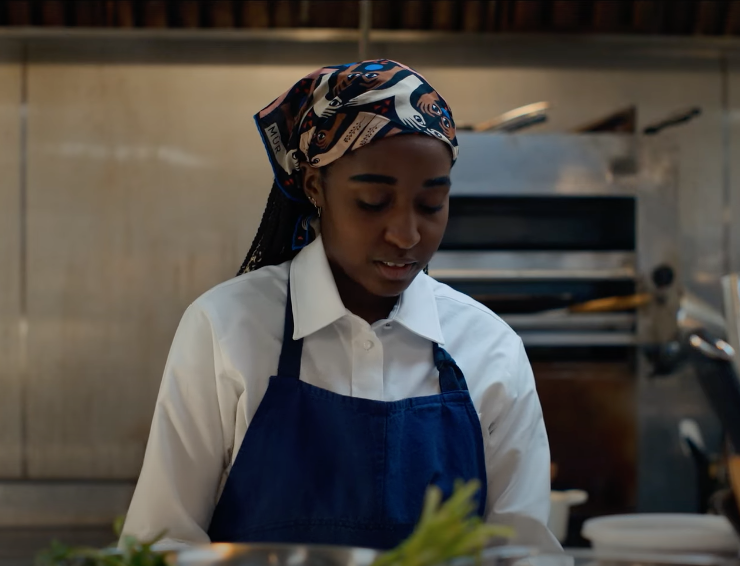interviews
The Voice of a Flower Shop Girl in Seoul
Kyung-sook Shin’s novel "Violets" listens to broken female desire in 1990s Korea

“Memory is an unannounced visitor. It lies crumpled in some corner of the body, then suddenly knocks on the door of reality and makes you scream.”
So states Kyung-sook Shin’s novel, Violets, translated by Anton Hur. Violets centers on Oh San, a young woman struggling with her memories, her desires, her voice and body amidst the uncaring world of 1990s Seoul.
Scarred by a childhood intimacy gone awry, San moves to Seoul and stumbles into a job at a flower shop. There, she begins finding stability through her friendship with a female co-worker, and a sense of peace in her burgeoning relationship with plants. However, after an encounter with a flirtatious photographer, her life splinters and breaks apart. As San flips through an English-Korean dictionary, the word “violet” morphs quickly into “violator.” Violets similarly probes at the painful fissures between the internal and the invasive, desire and violence, voice and silence. Hur’s translation is sparse yet fluid, the prose evoking both the gritty loneliness of a big city and a timeless, almost surreal atmosphere.
Flowers were bursting into extravagant life all around me, as I read Violets in March. I went for a walk in the rain after I finished. When I saw violets in the cracks of the sidewalk, petals tearing up with raindrops, I started crying and could not stop. Months after March, the novel’s last image of Oh San still haunts me. Echoing what Kyung-sook Shin said in our email interview, I hope that others will also take the time to listen to San’s voice.
Translations for this interview are done by the interviewer Jaeyeon Yoo with thanks to Incheol Kwag for helping edit and proofreading.
Jaeyeon Yoo: What is the role of nature, both in Violets and in your own writing in general?
Kyung-sook Shin: Violets features a flower shop in the middle of the city and a farm in the suburbs. These two spaces are interlocked with one another. Going between the flower shop and the farm, the protagonist comes into contact with plants. I hoped that these plants would soothe the protagonist’s alienation and loneliness. In order to do that, I myself had to know the details of the farm and the flower shop; so I got hired and did some work, which was a big help. And because I spent my childhood in the country, I tend to have an affinity for nature. These [experiences] became the foundation of finishing Violets.
JY: I still feel Violets to be just as relevant today as it was at its original publication in 2001 and Oh San’s life in the 1990s. Is there something you’d like to add, when considering Violets in 2022?
To live as a woman in Korean society is to still be exposed to so many kinds of discrimination and violence.
KS: Since I’ve written this book, many things in Korean society have changed, both economically and politically speaking. The position of women has also changed, to some extent. Despite this, to live as a woman in Korean society is to still be exposed to so many kinds of discrimination and violence. They say that, comparatively, we have improved a lot from the past. But I think that society needs to change so that the daily reality of being a woman—whether it be female desire or parenting—should feel protected, instead of being discriminated against.
I [also] think the sisterhood between women is extremely important. Especially in Violets, the solidarity between women is also the solidarity of the weak. They prop up and pull on each other’s lives. Therefore, when that solidarity breaks, the damage is immense. Traumatic events happen to an individual constantly, but they are quickly swept away without being noticed [as what happens to Oh San]. I think that this is the heartless life of modern people.
JY: Given this context, I found Oh San’s desire to have a voice (through writing) all the more poignant. What do you think about the connections between language and violence, and/or language and hope?
KS: Even if you are not a writer, if you can express yourself in your own words—you start striving to protect your own language. There is probably no one who hopes that their own voice will become colored by violence. I view this, the act of protecting your own voice, as hope.
JY: Violets also reminded me of how philosopher Susan Sontag formulates photography as an inherently violent art form, in which the “camera is … a predatory weapon.” I was struck by how Oh San fell for a photographer, someone whose job it is to observe and “capture” others in pictures. I wonder if you have more to say on the everyday act of being observed, as a woman.
Memories have the ability of being transformed at will, by the person who wants to remember them.
KS: Violets is from the perspective of a camera looking down, taking a photograph from above. This was an intentional gesture. The appearance of the photographer is an extension of that perspective, as is the gaze of the construction crew observing the women playing badminton. Even Oh San’s hidden love and desire become observed by someone, and ultimately leads to violence. In the first part of Violets, I focused on the loneliness that comes when an individual’s uniqueness is not preserved, but instead subjected to scrutiny and broken down. Modern life is not made of intimacy, but of being observed by others.
JY: Memory is a noticeably unreliable concept in Violets, not only for Oh San as the narrator but also in how the verb tenses and points of view shifted throughout. Could you speak more about the role of memory?
KS: Memories have the ability of being transformed at will, by the person who wants to remember them. Each person will remember differently, depending on the mood, time, place, and position when the memory is formed. If three people went through one event together, their memories should be the same, but they are all different. Even as this liquidity causes countless misunderstandings, I think life is ultimately completed by our accumulation of memories. This is why memory is precious to me. To keep proving that my memory is close to truth, perhaps that is also what writing is.
JY: I was struck by how you imbued such vivid character into Oh San’s surroundings. The flowers and minari field felt alive, but so did Seoul—with the details of the Italian restaurant, the “long room,” the crowds at night. Could you talk more about the setting of Seoul in the novel?
KS: When I read France’s Patrick Modiano or Japan’s Haruki [Murakami], I have this urge to go see the streets where their protagonists stroll. The street featured in Violets is the street that I lived on during my twenties, and the street that leads from Samcheong-dong to Gwanghwamun [the largest gate of Gyeongbokgung Palace] Jung-dong. I wanted to make my readers want to walk this street, so I described the street that Oh San walks with great detail. Then, during this process, I started to again see the lives of the people who walked that street, and this heavily influenced the novel.
JY: The beginning of Violets is almost surreal, as if we are being told a fable we should know already. You also use the myth of Io within the novel, when describing how violets were created. And then there is the foreshadowing throughout. Do you have more to say about the idea of fate that’s invoked by this tone of fable/myth?
KS: By borrowing the myth of Io, I hoped that the anonymous life of Oh San would be expanded with different symbolism. I wanted to say that this woman didn’t suddenly appear out of nowhere, that this has been passed down through generations. “Destiny” or “fate” is what we call things that we cannot decipher. But even if it cannot be deciphered, I think that destiny is ultimately what you decide in your unconscious.
JY: Any other thoughts you’d like to share?
KS: I wrote this in the author’s note, but a violet is a very small flower. It’s a flower that you won’t even know is blooming, if you don’t look closely. The first sentence of this novel is: “A little girl.” I hope you will listen to this little girl’s dreams that could not blossom, and the broken desire that she held close.









